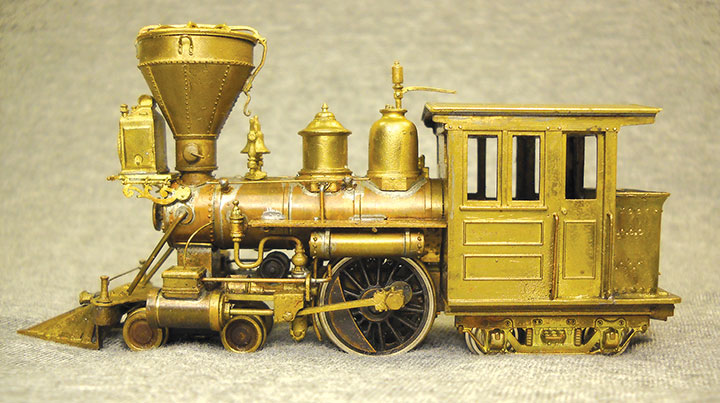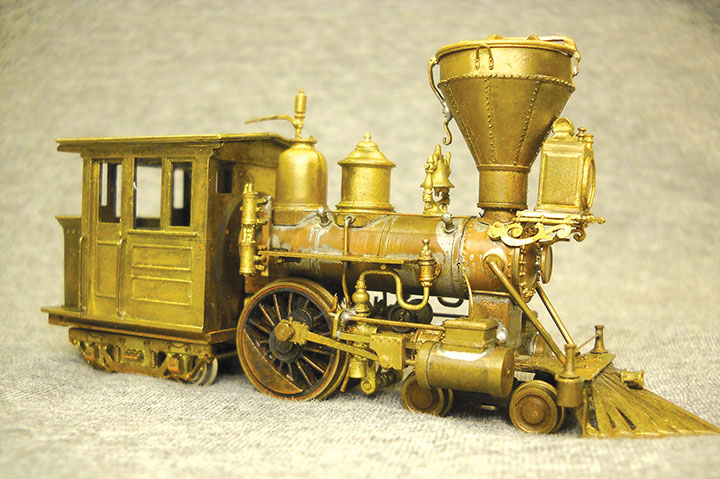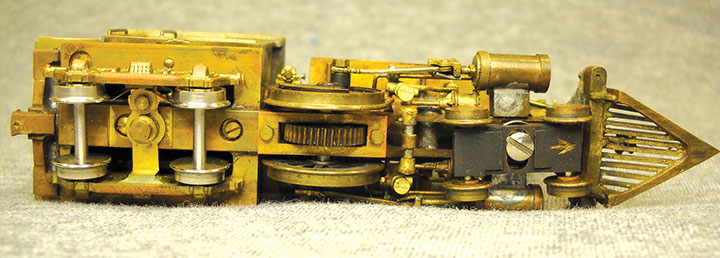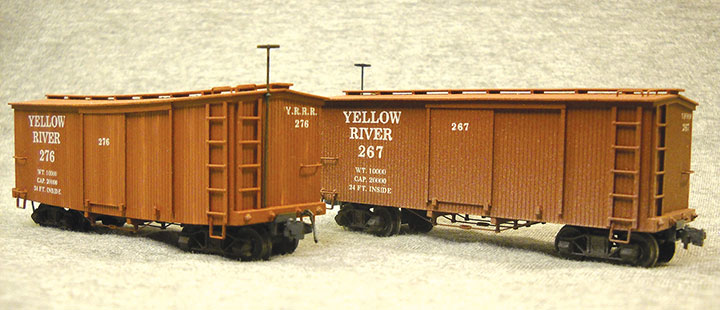The Inspiration
The term “bicycle locomotive” is sometimes applied to a locomotive having only one pair of driving wheels. While a number of such locomotives were built during the early years of railroading, perhaps the most famous is the C.P. Huntington.
Drawing from a number of sources, an article on Wikipedia states that the C.P. Huntington was built by the Cooke Locomotive Works in 1863, purchased by the Central Pacific Railroad in 1864, and was in use during construction of the western part of the transcontinental railroad in the late 1860s. The Southern Pacific bought the locomotive in 1871 and initially used it for light duty in northern California. It was rebuilt several times over the years, and was even used as a line-side weed-burner at one point. In later years it spent much time on the sidelines and was nearly scrapped in 1914, but was rescued and cosmetically restored for display at the Panama-Pacific International Exposition in 1915. It appeared again, running under its own steam, at the opening of the new Los Angeles Union Station in 1939. A home movie of this event shot by Ward Kimball is available on YouTube.
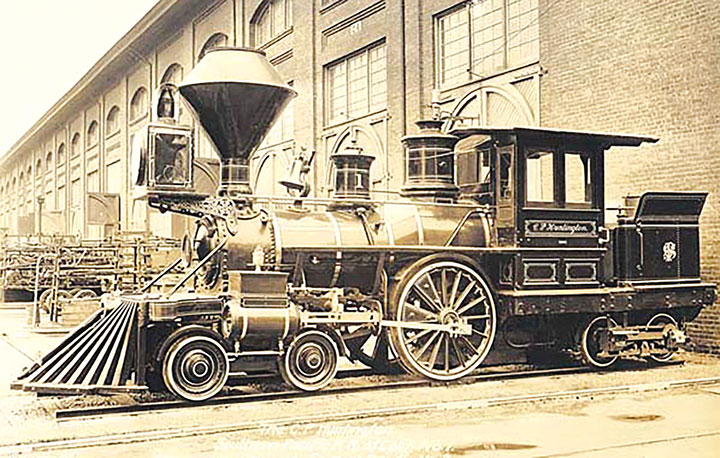
-Public domain photo.
The SP eventually donated the C.P. Huntington to the state of California in 1964, and it is currently on static display at the California State Railroad Museum in Sacramento, California.
The Model
Decades ago, Bob Davison, an accomplished modeler here in Pensacola, Florida, commissioned me to scratchbuild an HOn3 “bicycle” locomotive based on the C.P. Huntington. HO models of the C.P. Huntington had been imported by M.B. Austin, Key, and perhaps others over the years, but all of these were standard gauge, as was the prototype. Bob, however, wanted a narrow gauge version, which was not commercially available. So, after some discussion, Bob produced a drawing for me to work from. Actually, “scratch-assembly” is probably the best term for what I did on his project, since we agreed that I would use commercial parts wherever possible. I combined these parts, along with a scratchbuilt boiler and frame to produce a one-of-a-kind model. Building of the locomotive proceeded over a period of about six months with consultations on details, the purchase of various parts, and long sessions at the workbench. Finally, the locomotive was delivered to its new owner, and for many years thereafter, I gave it very little thought.
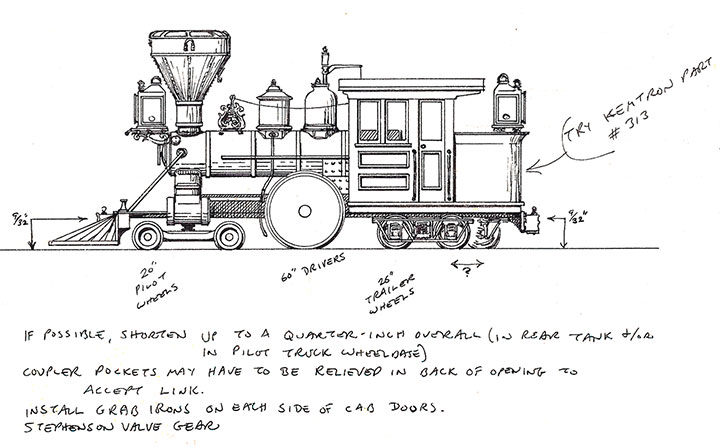
Then, two years ago, when I returned to Florida after spending the summer in my home town in Wisconsin, I was shocked to learn that Bob had unexpectedly passed away. Many of his models and other hobby-related possessions were now at the hobby shop where he had been employed and were in the process of being sold, with all the proceeds going to his estate. Looking through the boxes with very sad feelings, I encountered a collection of his model railroad items, including the little “bicycle” engine. I immediately bought it and took it home with me, along with several other items. The locomotive is shown and described here, along with two of Bob’s scratchbuilt HOn3 cars. So, here’s to you, Bob!


